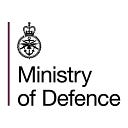7 things you didn’t know about the Royal Fleet Auxiliary
The Royal Fleet Auxiliary (RFA) is the civilian support branch of the Royal Navy, providing vital logistical and operational support to military operations
1. Who are they?
The Royal Fleet Auxiliary is a modern civilian-manned fleet owned by the Ministry of Defence (MOD), which delivers world-class, cost-effective maritime logistical and operational support to the Royal Navy.
They enable ships of the Royal Navy to maintain operations around the world 24/7 365 days a year.
The RFA is the uniformed civilian branch of the Naval Service; staffed by UK merchant sailors the RFA is the largest UK employer of British merchant seamen.
2. What support do they provide?
The RFA is an essential element of how the Royal Navy operates with freedom around the globe.
They are fully integrated with warships on the front-line — providing vital highly valued logistical and operational support to both the Royal Navy and the Royal Marines.
The RFA supports a wide spectrum of operations from high-tempo up-threat warfighting to counter-piracy, disaster relief, counter-narcotics, defence diplomacy, law enforcement and evacuation operations.
- Saving lives in the Caribbean
- Going beyond the call of duty: Hurricane Irma
- RFA Argus heads to support the Caribbean
In July 2008, in recognition of the support provided for over a century by the RFA to the MOD in general and the Royal Navy in particular, the RFA was presented with a Queen’s Colour, a rare and unique honour for a civilian organisation.
3. An important role throughout history
The Royal Fleet Auxiliary (RFA) Service was first established in 1905 to initially provide coaling ships for the Royal Navy in an era that introduced the change from sail to coal-fired steam engines as the main means of propulsion for warships.
From this period and for the subsequent over 100-years the RFA has provided constant logistical support to the Royal Navy.
Relied upon heavily throughout WWII, they have become the Royal Navy’s main source of support in the many conflicts that the navy has been involved in since 1945.
The RFA performed important service to the Far East Fleet off Korea from 1950 until 1953, when sustained carrier operations were mounted in Pacific waters.
The RFA also played a significant and vital role in the largest naval conflict since 1945, the Falklands War in 1982 (where one ship, RFA Sir Galahad, was lost and another badly damaged).
The RFA also provided substantial support during the Gulf War, Kosovo War, Afghanistan Campaign and the 2003 invasion of Iraq.
4. During conflict
Since 2003, during conflict, Sponsored Royal Naval Reservists — which are civilians — must be part of the Armed Forces in some form in order to carry out specialist civilian jobs in a military capacity.
During operational conflict, they are seen very much the same as their military counterparts — they are awarded the same campaign medals.
5. The fleet in numbers
Current RFA personnel numbers are:
- Officers = 561
- Chief/Petty Officers = 244
- Ratings = 820
- There are also 86 Officers and 131 Ratings under training.
The RFA Fleet consists of 13 ships;
- 1 x Primary Casualty Reception/Aviation Training Ship (RFA Argus)
- 3 x Bay Class Landing /Docking Ships (RFA Cardigan Bay, RFA Lyme Bay, RFA Mounts Bay)
- 3 x Fort Class Fleet Solid Support Ships (RFA Fort Austin, RFA Fort Rosalie, RFA Fort Victoria)
- 2 x Wave Class Fast Fleet Oil Tankers (RFA Wave Knight, RFA Wave Ruler)
- 4 x Tide Class Fast Fleet Oil Tankers (RFA Tidespring, RFA Tiderace, RFA Tidesurge, RFA Tideforce).
6. Do they still have ranks?
The RFA Service is headed up by a 1* senior RFA Officer — Commodore Duncan Lamb RFA.
RFA Officers and Ratings wear RFA rank insignia (badge) with naval uniforms, they are classed as an essential part of the navy and come under military discipline when an RFA vessel is engaged on warlike operations.
Rank insignia for the RFA differs to that of the Royal Navy in that instead of a circle, RFA Officers display a diamond above their stripes.
The insignia is also colour coded to reflect branch affiliation;
- Black = Deck/Operations
- Purple = Mechanical Engineer
- Green = Electrical/Electronic Engineer
- White = Logistics
- Blue = Communications Information Systems.
Dependent on branch, rank structure runs from Cadet through to Commodore.
7. Joining the RFA
Methods of entry into the RFA for Ratings is either as suitably qualified direct entry or through the RFA Apprentice scheme.
Ratings training is carried out at various Royal Navy and Defence training establishments (HMS Raleigh/Collingwood/Sultan/Defence College of Logistics Worthy Down).
RFA Officers are either enrolled, with the necessary experience, direct entry, recruited as Cadets or through the Rating to Officer scheme.
Officer training is carried out at various UK nautical colleges (Warsash/South Tyneside/Glasgow) and also at various Royal Navy and Defence training establishments.
All RFA officers complete Naval training at and pass out from Britannia Royal Naval College Dartmouth.
